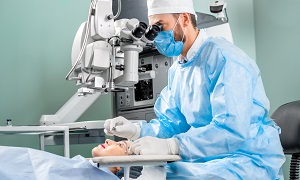Best Doctors in India for Diabetic Retinopathy Treatment
Best Hospitals in India for Diabetic Retinopathy Treatment
- City: Bengaluru, India
Hospital Highlights:
- Fortis Hospital Bannerghatta, Bengaluru was established in 2006.
- The hospital is a 276 bedded multi-specialty tertiary care facility.
- The hospital specializes in cutting-edge medical technology and dedicated patient care services.
- The hospital is equipped with state-of-the-art technologies like trans-radial angioplasty, trans-abdominal cardiac surgery, and computerized TKR navigation surgery.
- The hospital provides specialty medical services in cardiology, cardiac surgery, orthopedics, neurology, neuro-surgery, GI, and Minimal Access Surgery (MAS).
- City: Chennai, India
Hospital Highlights:
- Fortis Malar was established in 1992 and was formerly known as Malar Hospital.
- The hospital specializes in cutting-edge medical technology and dedicated patient care services.
- The hospital is multi-specialty, tertiary care facility with 180 beds.
- The hospital offers comprehensive medical care in specialties such as cardiology, cardio-thoracic surgery, neurology, neurosurgery, orthopedics, nephrology, gynecology, gastroenterology, urology, pediatrics, and diabetes.
- City: New Delhi, India
Hospital Highlights:
- Established in 1996, Pushpawati Singhania Research Institute is one of the top hospitals in the NCR region, as well as one of the top facilities in India for gastroenterology. The hospital is one of South Asia’s first institutes in medical and surgical treatment for diseases related to digestion.
- The hospital is equipped with state-of-the art facilities coupled with the latest equipment as well as renowned consultants from various parts of India as well as other parts of the world.
- City: New Delhi, India
Hospital Highlights:
- State-of-the-art technology and devoted healthcare professionals have been brought together under one roof at Venkateshwar Hospital to provide genuine medical care. The hospital’s professionals work together as a team to deliver the best possible treatment to their patients, using the most sophisticated equipment and information technology.
- Venkateshwar Hospital’s mission is to attain global excellence in healthcare by employing evidence-based, ethical clinical practices and cutting-edge technology by a team of highly skilled experts.
- City: New Delhi, India
Hospital Highlights:
- Sir Ganga Ram Hospital, New Delhi is known to provide the latest medical procedures with the latest technology in all of its units.
- The hospital has a team of reputed doctors, nurses, and healthcare professionals that ensure that patients receive quality care at affordable costs.
- Staffed with a team of highly qualified doctors, dedicated nurses, and paramedical and non-medical staff, the hospital aims to lead in healthcare delivery, medical education, training, and research.
- As per the vision of the founder, the hospital also provides free treatment to the economically weaker sections of society.
- Sir Ganga Ram Hospital also provides training to young doctors under the Diplomate in National Board(DNB) program. The DNB program at the hospital was started in 1984 and it is known for currently running the maximum number of DNB specialties in the country. It also has the distinction of having the first bone bank in India.
- City: Kerala, India
Hospital Highlights:
- Established in 2019, Apollo Adlux Hospital is the first Apollo Hospital in Kerala and the 73rd hospital owned by Apollo Group in India. With the state’s most advanced, comprehensive healthcare infrastructure and cutting-edge technologies, Apollo Adlux Hospital stands as an example of medical excellence in Kerala.
- With over 34 multi-specialty departments, the hospital believes in providing the best quality treatment to its patients at affordable rates, ensuring comfort at their difficult times.
- The 300-bed hospital is managed by a team of highly qualified and experienced experts who delivers exceptional hospitality to their patients and treats them with great compassion.
- With its affiliation with the Apollo Hospitals Group, the hospital aims in providing patients with top-notch healthcare services while also serving communities in Kerala.
- The hospital has good railway and road connections, and is conveniently close to Cochin International Airport.
- City: Gurugram, India
Hospital Highlights:
- Situated near DLF Cyber City, Gurugram, Narayana Superspecialty Hospital is one of the top medical facilities in the Delhi NCR region, catering to the needs of the people. Known for its commitment to quality medical care and patient service, the hospital is a state-of-the-art facility with planned and well-equipped sections, which includes a spacious OPD area as well as comfortable patient rooms.
- It is the closest super-specialty hospital from Indira Gandhi International Airport towards Gurugram, and also the nearest super specialty hospital from DLF Cyber City. It is also close to major residential areas in Gurugram.
- It is part of the renowned Narayana Health Group. Established in 2000, by Dr. Devi Shetty, a renowned cardiac surgeon, it has grown to be one fo India’s leading healthcare groups.
- City: Noida, India
Hospital Highlights:
- Fortis Hospital, Noida, stands as one of the oldest and most trusted healthcare institutions in the region, setting a benchmark for comprehensive medical care.
- As the second mega hub hospital in the Fortis Healthcare Group, Fortis Hospital, Noida, upholds a legacy of trust among more than 1.2 million patients. By integrating top-tier professionals with cutting-edge technology, the hospital delivers superior treatment across various medical disciplines.
- Specializing in advanced Neurosciences, Orthopedics, Kidney and Liver Transplant Programmes, Fortis Hospital, Noida has successfully performed over 1,500 transplants, solidifying its reputation as a leader in specialized medical interventions.
DIABETIC RETINOPATHY
Diabetic retinopathy is a condition that occurs due to damage to the blood vessels of the retina in people suffering from diabetes. If you have type 1 or type 2 diabetes, and a long history of uncontrolled blood sugar levels, you might develop diabetic retinopathy.
Though the condition generally starts with a mild vision loss, eventually you might even lose your sight. Diabetic retinopathy is known to be the most common eye disease among people who suffer from diabetes.
Symptoms
Although you might not have any symptoms in the early stages of diabetic retinopathy, as the condition progresses, some of the symptoms might include:
- Blurred vision
- Fluctuating vision
- Floaters
- Dark or empty areas in your vision
- Impaired color vision
- Vision loss
This condition is known to generally affect both eyes. If you are suffering from diabetes, managing it carefully is one of the best ways to prevent loss of vision. Even if your vision seems fine, see your eye doctor once every year for an examination.
Pregnancy might also worsen diabetic retinopathy, and therefore if you are pregnant, additional eye exams might be recommended by your doctor.
If your vision changes suddenly or becomes blurry, spotty, or hazy, then contact your eye doctor right away.
Causes & risk factors
High levels of sugar in your blood over long periods can lead to diabetic retinopathy. The excess sugar causes damage to the blood vessels supplying your retina with blood. High blood pressure is a risk factor, as well, for retinopathy.
The retina is a layer of tissue in the back of your eye, which helps to change the images that the eye sees into nerve signals so that the brain can understand them. When the retina’s blood vessels undergo any damage, they can get blocked. This cuts off some of the blood supply of the retina. This loss of blood flow can even lead to other, weaker blood vessels to grow and these new blood vessels may leak and also create scar tissue which can lead to loss of vision.
The longer you suffer from diabetes, the higher are your chances of developing diabetic retinopathy. People who suffer from diabetes for over thirty years generally show signs of retinopathy. Managing your diabetes can generally slow the progression.
Although any person with diabetes is at risk of diabetic retinopathy, the risk becomes higher if the person:
- Has uncontrolled blood sugar levels
- Has high cholesterol
- Has high blood pressure
- Is suffering from diabetes for a very long time
- Is pregnant
- Smokes regularly
Diagnosis
Eye exam
- Scarring
- Leaking of the blood vessels
- Blocked blood vessels
- Changes to the lens
- Retinal detachment
- Damage to the nerve tissue
Fluorescein angiography test
They may also perform a fluorescein angiography test, which involves injecting a dye into your arm, which allows them to track how the blood flows in your eye. They will need to take pictures of the dye circulating inside your eye so that they are able to determine which vessels are blocked, leaking, or broken.
OCT exam
An OCT (optical coherence tomography) exam might be used as well. It uses light waves in order to produce images of the retina. These images let your doctor determine the thickness of your retina and let him/her known if any fluid has accumulated in it.
Treatment
For people suffering from early diabetic retinopathy, treatment options are limited. Your doctor might want to perform regular eye exams, in order to monitor the eye health just in case, treatment becomes necessary. An endocrinologist can also help you slow the progression of the condition by helping you manage your diabetes.
For people suffering from advanced diabetic retinopathy, the treatment options depend on the type and severity of the condition. Treatment can be of various types.
Photocoagulation surgery
Scatter photocoagulation
Scatter photocoagulation is a method that involves using a laser to burn hundreds of tiny holes in the eyes so that the risk of blindness is reduced.
Focal photocoagulation
Focal photocoagulation, meanwhile, involves using a laser to target a specific leaky vessel in the macula so that macular edema doesn’t worsen.
Vitrectomy
Vitrectomy is another method of treatment that involves removing scar tissue and cloudy fluid from the vitreous fluid of the eye.
Complications
If left untreated, diabetic retinopathy might lead to several complications.
When blood vessels bleed into the vitreous, the main jelly that fills the eye, this is called vitreous hemorrhage. The symptoms include floaters, in mild cases, but in severe cases, symptoms can include vision loss, as the blood in the vitreous blocks any light from entering the eye. If the retina remains undamaged, then the bleeding in the vitreous is able to resolve itself. In some cases, diabetic retinopathy might even cause a detached retina. This complication can happen if scar tissue pulls the retina away from the back of the eye.
The abnormal blood vessels which are associated with this condition stimulate the growth of scar tissue as well, which can pull the retina away from the back of the eye. This is known as retinal detachment. This can cause spots floating in your vision, flashes of light, or in some cases, severe vision loss.
In some cases, blood vessels might grow in the front part of your eye, and this might interfere with the normal flow of fluid out of the eye, causing pressure in the eye to build up. This is known as glaucoma. This pressure can damage the nerve carrying images from your eye to your optic nerves.
Diabetic retinopathy, glaucoma, or a combination of both can lead to you losing your vision completely.
Prevention
Diabetic retinopathy can’t be always prevented. However, regular eye examinations, as well as proper control of your blood sugar and blood pressure, as well as an early intervention for vision problems can help to prevent severe vision loss.
If you smoke or use any other kind of tobacco, quitting is the best way to prevent diabetic retinopathy. Ask your doctor if you need help in quitting.










